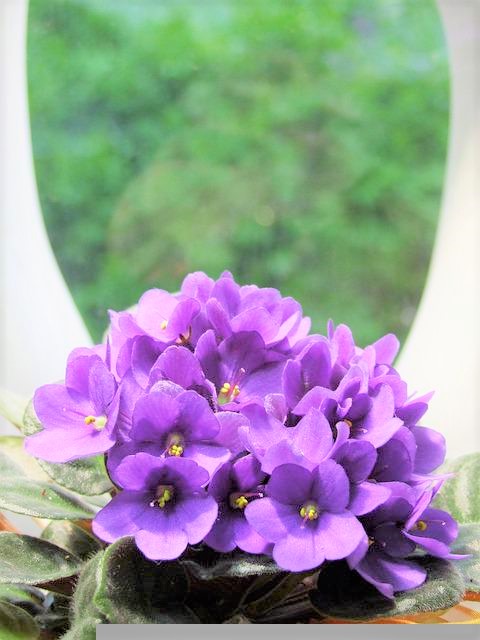Last updated on February 22nd, 2023 at 10:40 am
African violets are very popular houseplants because they bloom several times a year and come in a variety of leaf forms and colors. They feature thick, fuzzy leaves and violet flowers that bloom nearly all year round.
While African violets have a reputation for being difficult to grow, they shouldn’t give you a lot of work if you grow them indoors. With a little TLC, you can keep these slow-growing plants blooming nearly year-round. With the right conditions, African violets can bloom 10-12 months a year. Each bloom lasts for about 2-3 weeks.
African Violet Indoor Care
Light
African violets don’t need direct sunlight. Some homeowners place them near windows while others put them under fluorescent lights. Keep yours a few feet away from bright west-facing or south-facing windows. If you notice the leaves turning light green, it means the plants are getting too much light. Thin, dark green leaves suggest too little light.
Soil
For easy care, pot your plants in the right soil. You can buy a special soil mix or mix equal parts of perlite, peat moss, and vermiculite to make your own. It’s essential to have a well-drained potting mix because poor drainage can lead to root rot. The plant may become waterlogged and its leaves may fall. Your plant should never stay in standing water.
Water
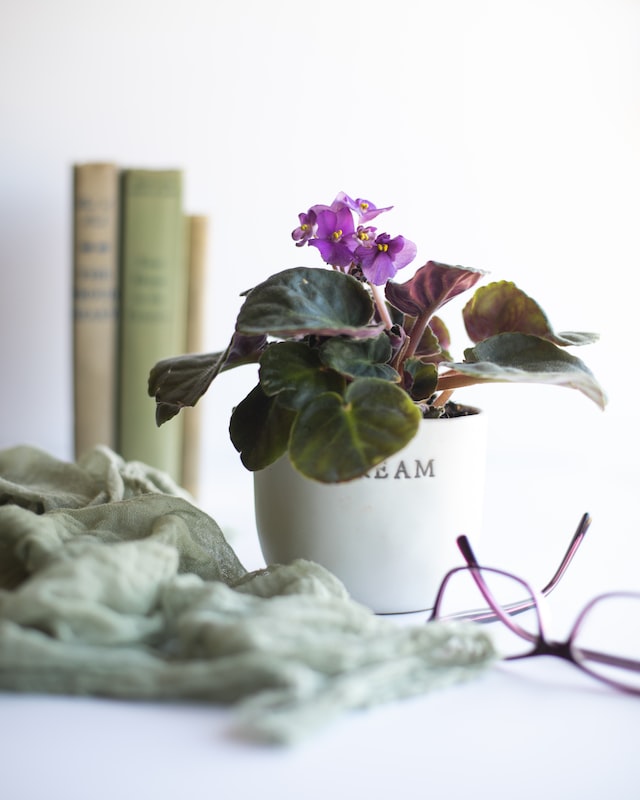
Be careful when watering your violets because they don’t love water—they are semi-succulents. Keep the soil moist with warm water and don’t put water on the foliage as it can cause foliar spots
Water your plants whenever the soil feels dry. Never let your African violets dry out. When watering, push the water spout into the soil or water from below. Proper watering will ensure your African violets grow well.
Fertilizing
In spring and summer, fertilize your plant every 2 weeks with a high phosphorous fertilizer. But only fertilize the plant if it needs an extra boost—if it has pale or yellowing leaves or slow growth. Since most soil mixes are infused with plenty of nutrients, be careful not to over-fertilize your plant.
Temperature and Humidity
African violets thrive in temperatures between 65°F and 80°F. The plants thrive in warm and humid conditions and will perform best when day and night temperatures don’t exceed five degrees either way. If the temperature goes higher than 85 degrees F or lower than 60 degrees F, your plants will suffer. Avoid sudden drafts as well as temperature and humidity fluctuations.
How to Fix African Violet Crown Problems
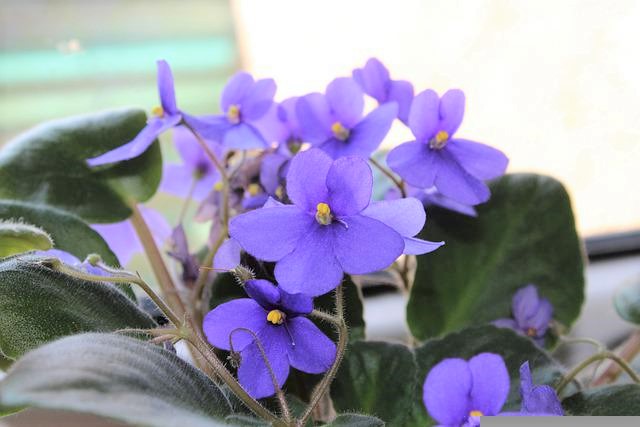
Crown & Root Rot
This is one of the most serious fungal problems of African violets. The plant’s crown and roots may turn soft and mushy. Older leaves start to droop, while the younger ones in the plant’s center may turn black and die. This problem may be caused by fungi and could be a result of excessive watering, poor drainage, or very deep planting. These three can cause the crown and roots to rot.
Prevention
To prevent disease, clean containers when planting and use sterilized potting soil mixes. Also, avoid planting African violets too deep. Whenever you discard severely affected plants, don’t reuse the pots until you thoroughly scrub them clean.
Botrytis Blight
This disease is caused by fungus. You may notice small water-soaked lesions on the undersides of the leaves. Flowers, leaves, and stems may appear blighted and turn color—from dark brown to gray—and have a fuzzy coating on the surface.
Prevention
Remove and throw away all dead and dying plant parts. Ensure the plant has better air circulation and don’t put water on the foliage and flowers. This disease often follows mite damage, so control the pest if you want to prevent it.
Are African Violets Poisonous to Cats?
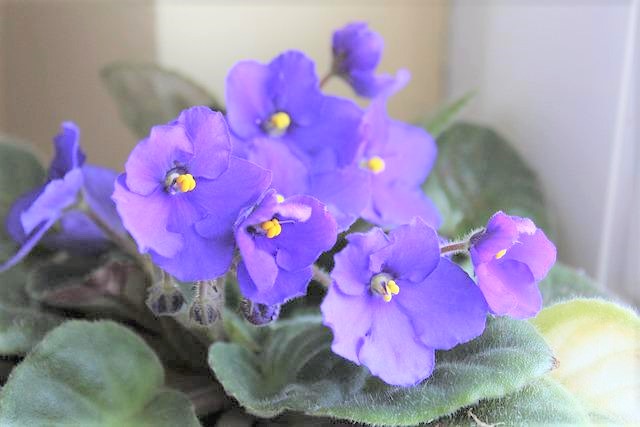
African violets are non-toxic to cats and horses. This is according to the ASPCA Toxic and Non-Toxic Plants report. So, if you happen to have a curious cat that loves chewing your lovely house plant, don’t be worried.
If you have plants and cats, it’s important to take care of both and keep everyone safe. The last thing you want is to come home to a cat with an upset belly or spilled plants. To ensure your cats don’t ruin your beautiful flowers, train them to leave the plants alone.
Are African Violets Poisonous to Dogs?
African violets are non-toxic to dogs, too. Neither the plants nor the leaves can harm your pet. You can grow the plants indoors and give your dog free access to them—but is better if the dog does not eat the plants.
Any unfamiliar thing your dog eats may cause an allergic reaction or diarrhea. Plant fertilizer or other additives in the soil can make your dog ill. Most dogs don’t eat plants like African violets, although some will eat anything they come across.
Are African Violets Poisonous to Humans?
No, African violets are not toxic to humans. But if you have small children, be sure to keep the plants out of their reach as they might have an allergic reaction to the plant’s sap and foliage.
While African violets are not toxic, don’t allow kids to eat the plants as some houseplants can be poisonous. Also, the plant’s sap and hairy leaves can cause a reaction in kids. The fuzzy cover on the plants can irritate the skin, and some plant parts or leaves can choke small kids.
Are African Violets Perennials?
African violets are popular perennials that are mostly grown as compact houseplants. Perennials bloom over spring and summer, die back every autumn and winter, and then bloom again in spring. African violet plants come in a wide variety of colors and forms. Their dark green leaves have a soft, fuzzy texture.
Are African Violets Succulents?
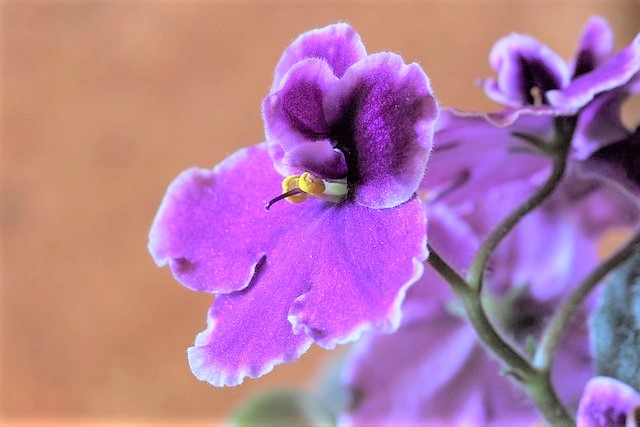
African violets aren’t succulents, they are semi-succulent plants that are mostly grown for their fuzzy leaves and delicate blooms. They are found in a small mountainous area in Northern Tanzania and Southern Kenya.
Are African Violets Hard to Care for?
No, African violets are very easy to care for. So long as you don’t neglect them and provide all of their necessities, they will grow and bloom every season. The plants are low-maintenance and reliably bloom several times a year when properly cared for.
If your African violets don’t bloom, they are probably not getting enough light. The plants need indirect sunlight as their leaves can get damaged by direct sunlight. For the best results, place them next to an east-facing or a north-facing window. Keep them away from cold windows and be sure to rotate their pots weekly so the leaves absorb light equally.
Are African Violets Indoor or Outdoor Plants?
African violets are indoor plants that need specific conditions to thrive. For the best color and blooms, grow your plants in bright, indirect light. The hardy, colorful plants prefer warmer climates and are considered indoor-only plants in most parts of the United States.
Unless you live in an area that enjoys good weather almost all year round, put them indoors. African violets make great gifts and can travel from house to house and get passed between friends and family.
Can You Grow African Violets In Water?
Generally, African violets need enough water to thrive. Make the soil moist, not soggy. If you put too much water in their pots, you’ll make them susceptible to deadly pathogens like Root Rot, Pythium, and Crown Rot.
Can you root African violets in water? Yes, it’s easy to root the flowering beauties. Place a stem in water until roots begin to grow. Then choose a healthy leaf and detach it from the plant by toggling it side to side until it pulls free. Don’t pinch or bruise the leaf as this may lead to rotting.
African Violet Flowers Dying, What to Do?
Inadequate watering can cause roots to shrivel and die. The plant may lose color and vigor and then collapse. African violets need average indoor humidity—40%-60% is ideal. If you live in a very dry area, water the soil lightly on a daily basis. Water your plants in the morning, not late in the day or at night.
Flower loss can be caused by insufficient water, nutrient-deficient soil mix, or too much light. Water your plants regularly and don’t put them in direct sunlight. Also, get the right fertilizer to nourish them.
